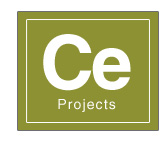 The fact that “community engagement” has risen to the status of a stand-alone specialty says something about the difficulty of aligning citizens’ values and priorities with both planning and design and the regulations that shape development.
The fact that “community engagement” has risen to the status of a stand-alone specialty says something about the difficulty of aligning citizens’ values and priorities with both planning and design and the regulations that shape development.
Why do we have to coax and cajole one another to talk about how neighborhoods and towns look and feel?
The answer is that the “community” most of us live in is really a set of overlapping, sometimes conflicting sub-communities. We’re obligated to families, businesses, churches, schools, civic organizations and other networks that define slivers of our lives and demand investments of our time and resources. We’re so distracted it takes a conscious effort to sit down with others, negotiate our competing priorities and agree on values that stitch back together the idea of a bigger, more inclusive community.
The fact is, getting from many communities to one is such a struggle that it’s tempting to overstress just one part of the process -- the part that convenes a crowd but fails to achieve a common vision and a commitment to act upon it. We believe, however, that getting to meaningful action is the end goal. Everything else is a means towards that end.
PlaceMakers pioneered and refined many of the tools of contemporary community engagement. We work in collaboration with clients and their customers in plain sight of everyone. Often, we customize and leverage advantages of the charrette method to speed the transition between consensus-building and actionable plans. And we’ve taken many of those advantages online with the iCharrette, our adaptable web-based platform for project-focused, interactive communication in near-real-time.
We blog. We tweet. We plug into online communities every place we work. Yet we are just as committed to maximizing the advantages of low-tech, old-school tools that range from one-on-one and small-group discussions to brand building, public and media relations and marketing techniques borrowed from journalism and advertising.
But here’s something we never do: We never confuse means and ends.
We facilitate purposeful engagement. And we measure success by implemented results in line with the vision that emerges from that engagement.
The following iCharrettes offer up some examples of how PlaceMakers works. These pages aren't just websites, but they chronicle a process and an approach for how to integrate the voice of the people into vision, policy, plans, and codes.
Doña Ana County, New Mexico | Policy and Land Use Law
www.vivadonaanaudc.org | Multiple weeks of onsite community outreach | Study area: 2.5 million acres | Final deliverables: comprehensive policy plan and unified development ordinance with form-based code and use-based code
Las Cruces, New Mexico | Policy and Land Use Law
multiple charrettes | Final deliverables: downtown master plan update, downtown form-based code, neighborhood plan near Downtown, with makerspace component: Neighborhood plan project website: www.amadorproximo.org
Decatur, Georgia | Policy and Land Use Law
www.decaturnext.com | Multiple weeks of onsite community outreach | Study area: 2,600 acres | PlaceMakers communications team as subconsultant | Final deliverables: communications strategy and iCharrette for comprehensive policy plan and unified development ordinance
Coastal Recovery Commission, Alabama | Resilience Plan
crcalabama.org | 90 days of community outreach | Study area: BP Oil Spill coastline | Final deliverable: book
Among our community engagement services:
- Complete engagement process design and facilitation
- Workshop planning, facilitation and reports
- The project-branded iCharrette web portal, telling your ongoing story through reports, video and documentation
- Media and public relations
- Collateral materials (posters, flyers, mailers, brochures, reports, signage, and more)
- Branded HTML email strategy, content, distribution list development and maintenance
- One-on-one and small group facilitation for bottom-up consensus-building
- Educational workshops, seminars and expert presentations
- “Audits” of current processes for more successful outcomes

